Planting for Spring: Bulbs and Cool-Season Annuals to Add in October
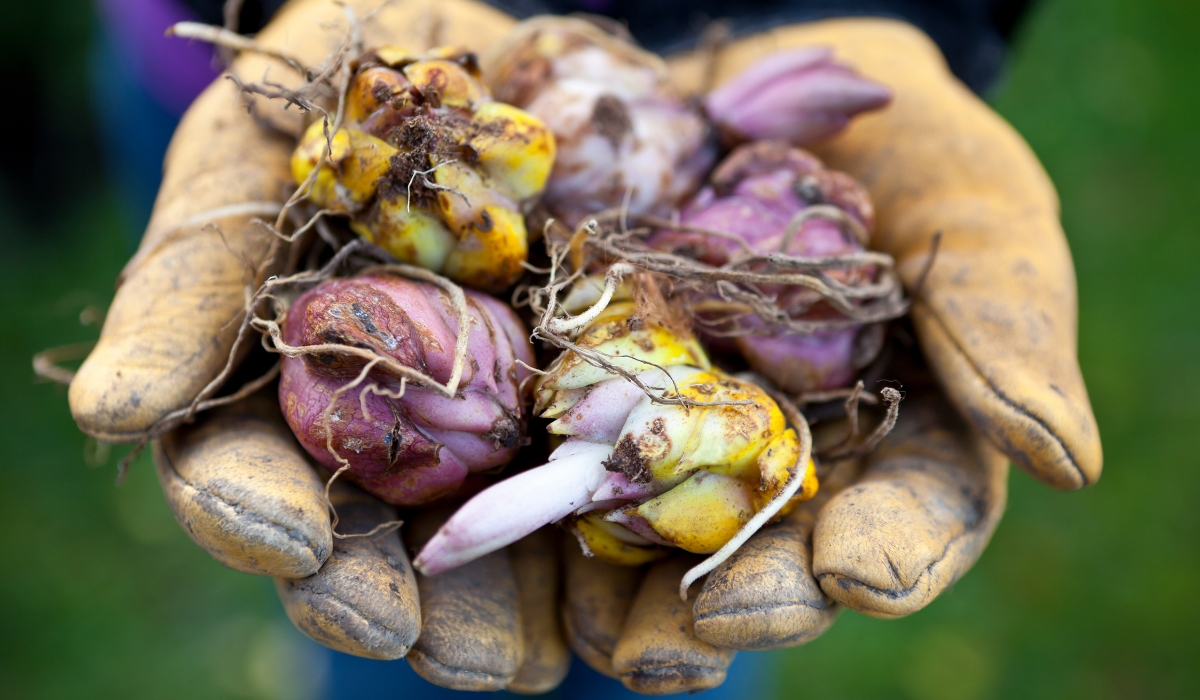
1. Spring-Blooming Bulbs: A Promise of Early Color
- Choose healthy, firm bulbs free of mold or damage.
- Plant at the right depth: Generally, bulbs should be planted two to three times as deep as their height (for example, a 2-inch bulb goes 4–6 inches deep).
- Group bulbs in clusters for a natural, dramatic effect rather than single rows.
- Water thoroughly after planting to settle the soil and encourage rooting.
2. Cool-Season Annuals for Fall and Early Spring Interest
- Plant annuals in well-drained soil amended with compost.
- Water regularly, especially during dry spells.
- Deadhead spent flowers to encourage continuous blooming.
3. Add Texture and Structure with Ornamental Grasses
4. Mulch and Protect New Plantings
5. Plan for Succession
Trust DK Landscaping for Expert Planting
Essential Fall Clean-Up Tips for a Healthy Landscape

1. Remove Fallen Leaves Regularly
2. Cut Back Perennials and Clean Up Beds
3. Prune Trees and Shrubs
4. Refresh Mulch and Protect Roots
5. Prepare Your Lawn and Equipment
6. Plan Ahead for Spring
Let DK Landscaping Handle the Heavy Lifting
September Lawn Recovery: Repairing Summer Damage for a Greener Fall

1. Aerate Your Lawn to Relieve Compaction
2. Overseed Thin or Bare Areas
3. Feed Your Lawn for Recovery
4. Address Weeds and Thatch
5. Water Consistently During Recovery
6. Maintain Good Lawn Practices
Trust the Experts for Lasting Results
Why Fall is the Best Time to Plant Trees and Shrubs
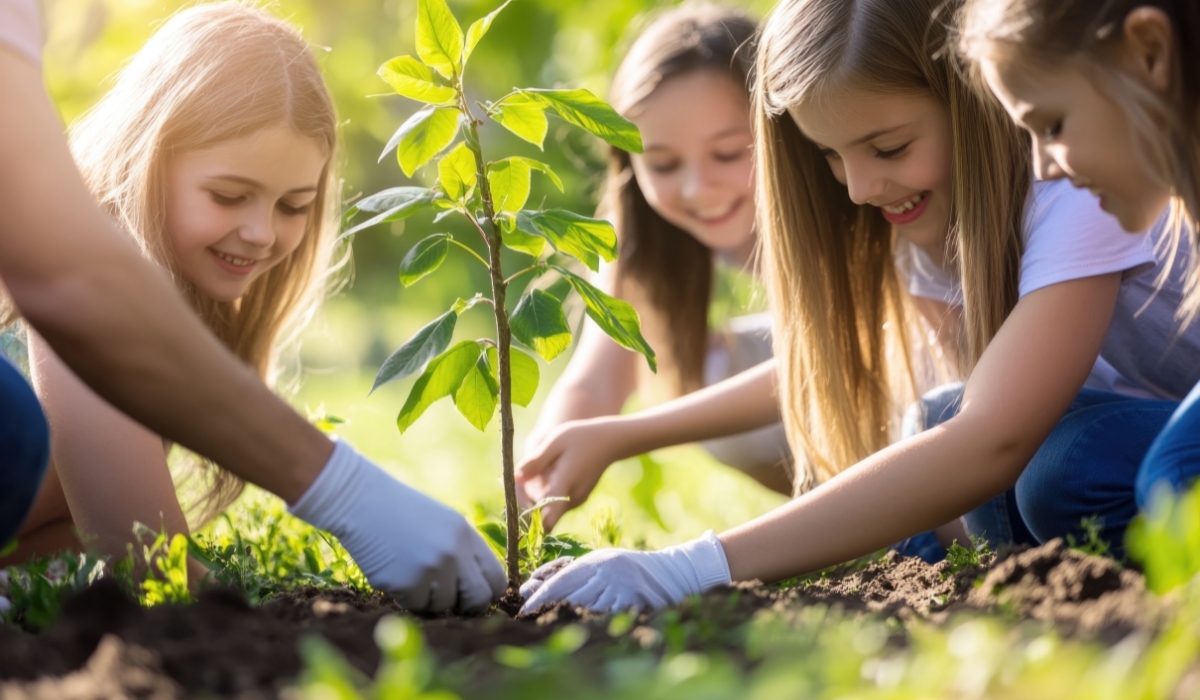
1. Cooler Temperatures, Less Stress
2. Warm Soil Promotes Root Growth
3. Less Watering Required
4. Fewer Pests and Diseases
5. Steps for Successful Fall Planting
- Choose the Right Plant: Select species and varieties that are well-suited to your region and site conditions.
- Dig Properly: Make the hole twice as wide as the root ball, but no deeper. Loosen the soil on the sides to encourage outward root growth.
- Plant at the Correct Depth: The top of the root ball should be level with the surrounding soil.
- Backfill and Water Well: Replace the soil, gently tamping it down to remove air pockets. Water thoroughly after planting.
- Mulch: Add a 2–3 inch layer of mulch around the base (but not against the trunk) to retain moisture and regulate soil temperature.
6. Plan for Ongoing Care
Trust Your Local Experts
August Planting Guide: Best Flowers and Shrubs to Add Now
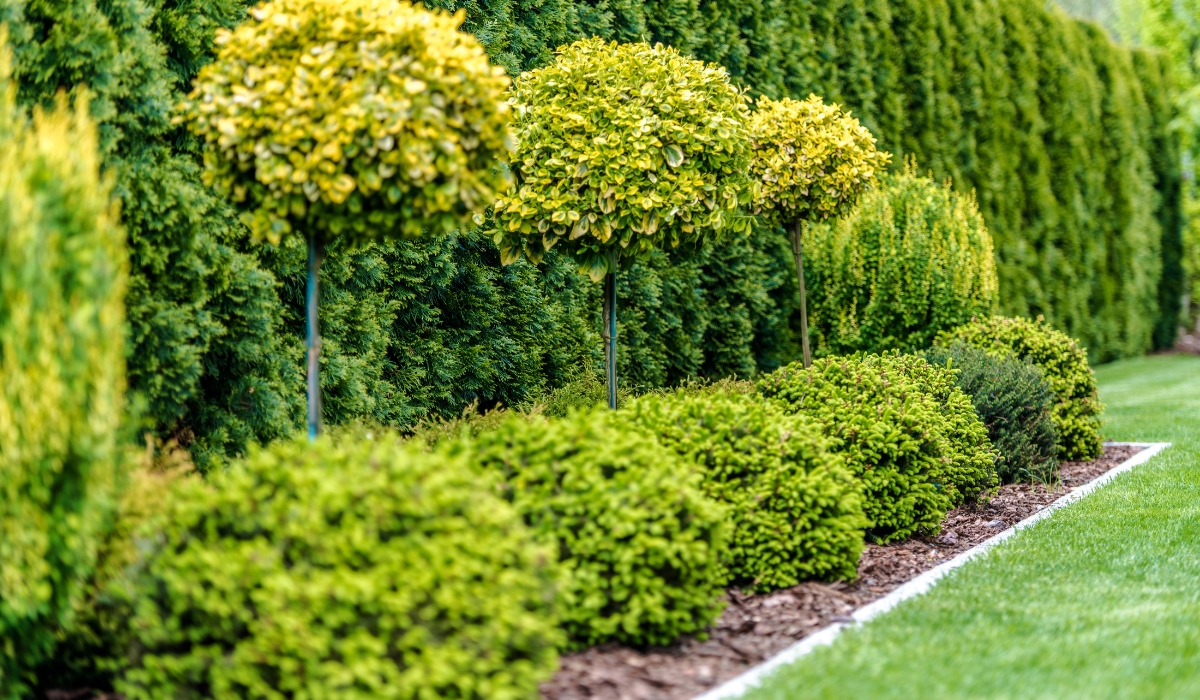
1. Heat-Tolerant Annuals for Instant Color
2. Late-Blooming Perennials for Season-Long Beauty
- Loosen the soil and mix in compost for added nutrients.
- Space plants according to their mature size.
- Water thoroughly and mulch around the base to conserve moisture.
3. Shrubs That Shine in Late Summer
- Dig a hole twice as wide as the root ball but no deeper.
- Place the shrub so the top of the root ball is level with the soil surface.
- Backfill, water deeply, and mulch to retain moisture.
4. Tips for Successful August Planting
- Water new additions deeply and regularly during their first few weeks, as summer heat can quickly dry out the soil.
- Mulch around the base of new plants to help conserve moisture and suppress weeds.
- Avoid fertilizing immediately after planting; let roots settle first, then feed lightly in early fall if needed.
5. Plan for Fall and Beyond
Expert Help When You Need It
Late Summer Lawn Care: How to Keep Your Grass Green Through the Heat
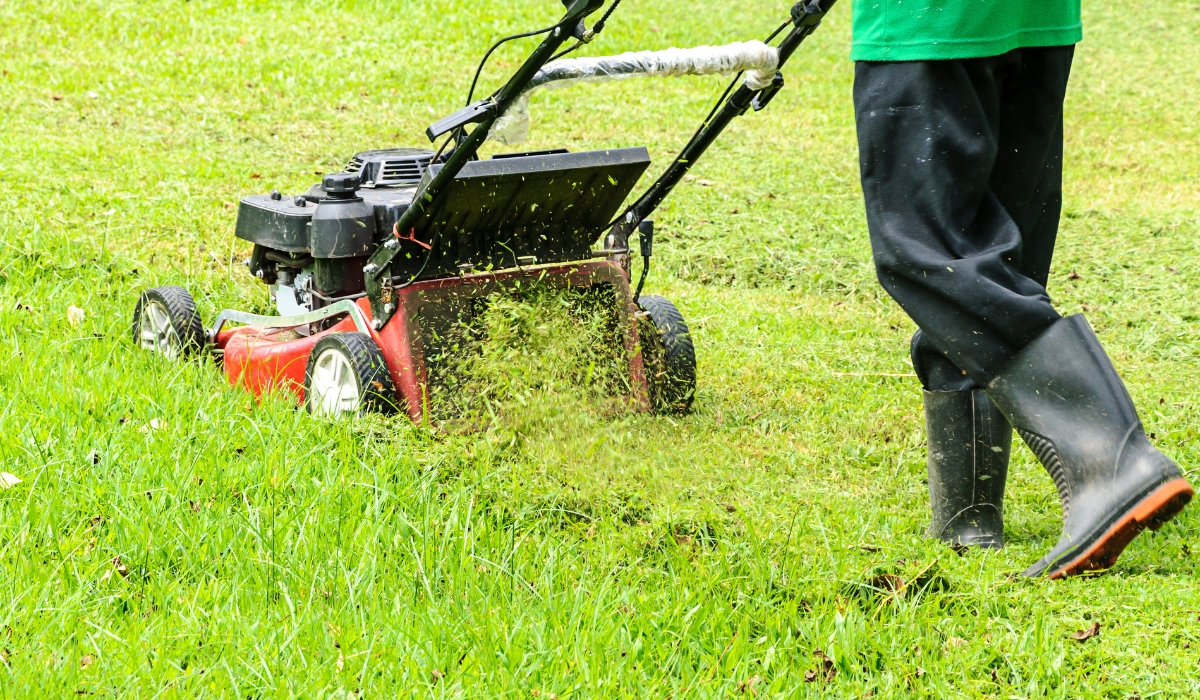
1. Water Deeply, Not Daily
2. Raise Your Mower Blade
3. Fertilize Lightly, If at All
4. Control Weeds and Monitor for Pests
5. Plan Ahead for Fall
Trust the Pros
The Perfect Patio: Design Ideas for Your Outdoor Living Space
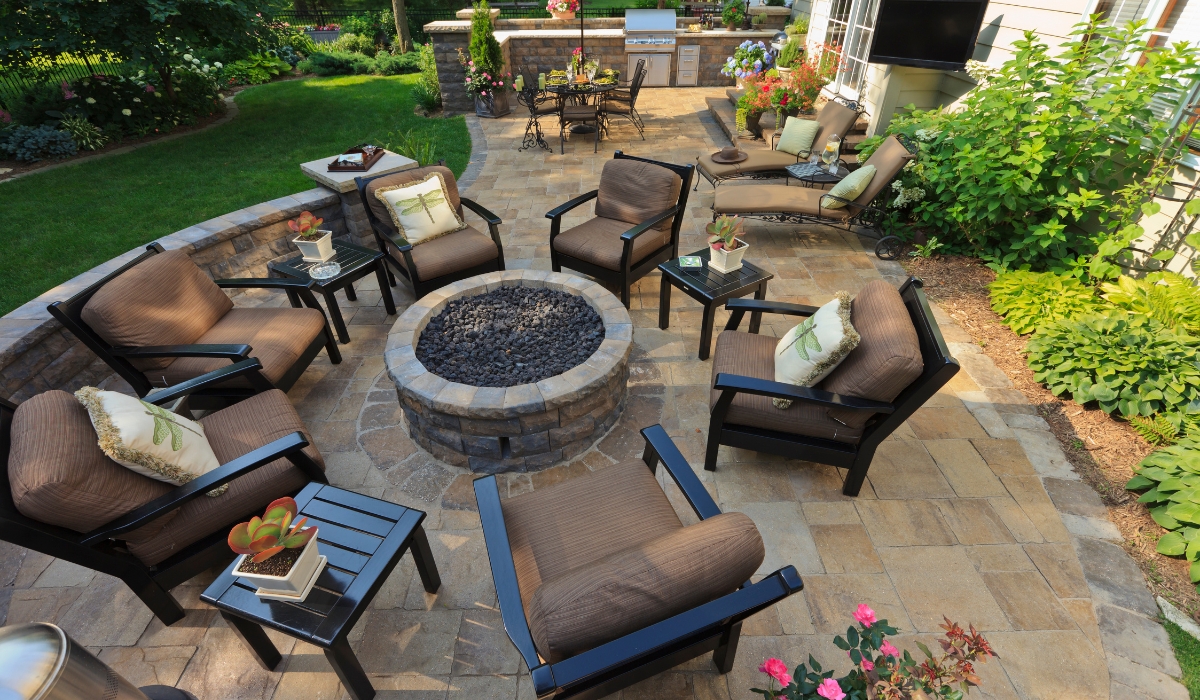
Your patio is more than just a paved area in your backyard; it’s an extension of your home, a place to relax, entertain, and enjoy the beautiful California weather. At DK Landscaping, we believe that a well-designed patio can transform your outdoor space into a true oasis. Whether you’re dreaming of a cozy retreat for two or a spacious entertainment area for family and friends, we have the ideas and expertise to bring your vision to life.
Finding Your Patio Personality
The first step in creating the perfect patio is to think about how you want to use the space. Are you a sun-worshipper who wants a place to lounge and soak up the rays? Or are you a night owl who dreams of hosting dinner parties under the stars? Your answer will help to determine the size, shape, and style of your patio.
Here are a few popular patio styles to consider:
- The Entertainer’s Dream: A large, multi-level patio with a built-in barbecue, a fire pit, and plenty of seating is perfect for hosting a crowd.
- The Cozy Nook: A small, intimate patio with comfortable seating and lush plantings is the ideal spot for a quiet morning coffee or a romantic evening for two.
- The Modern Escape: A sleek, minimalist patio with clean lines, a neutral color palette, and a focus on texture is the perfect complement to a contemporary home.
Material Matters
The materials you choose for your patio will have a big impact on its look, feel, and durability. Here are a few popular options:
- Pavers: With a wide variety of colors, shapes, and sizes to choose from, pavers are a versatile and durable option for any patio.
- Natural Stone: From elegant flagstone to rustic slate, natural stone will give your patio a timeless, organic look.
- Concrete: Poured concrete is a budget-friendly option that can be customized with a variety of finishes and colors.
Putting the Finishing Touches
Once you’ve chosen the style and materials for your patio, it’s time to add the finishing touches that will make it your own. Here are a few ideas to get you started:
- Lighting: The right lighting can transform your patio from a daytime hangout to a magical evening retreat. Consider a mix of overhead lighting, accent lighting, and task lighting to create a layered and inviting look.
- Plants: Container gardens are a great way to add color, texture, and life to your patio. Choose a variety of plants with different heights, shapes, and colors to create a lush and inviting look.
- Furniture: Comfortable and stylish furniture is a must for any patio. Choose pieces that are durable, weather-resistant, and that reflect your personal style.
Ready to create the patio of your dreams? The team at DK Landscaping is here to help. We’ll work with you to design and build a beautiful and functional outdoor living space that you’ll enjoy for years to come. Contact us today for a consultation!
Beyond the Buzz: Creating a Bee-Friendly Garden That’s Also Beautiful
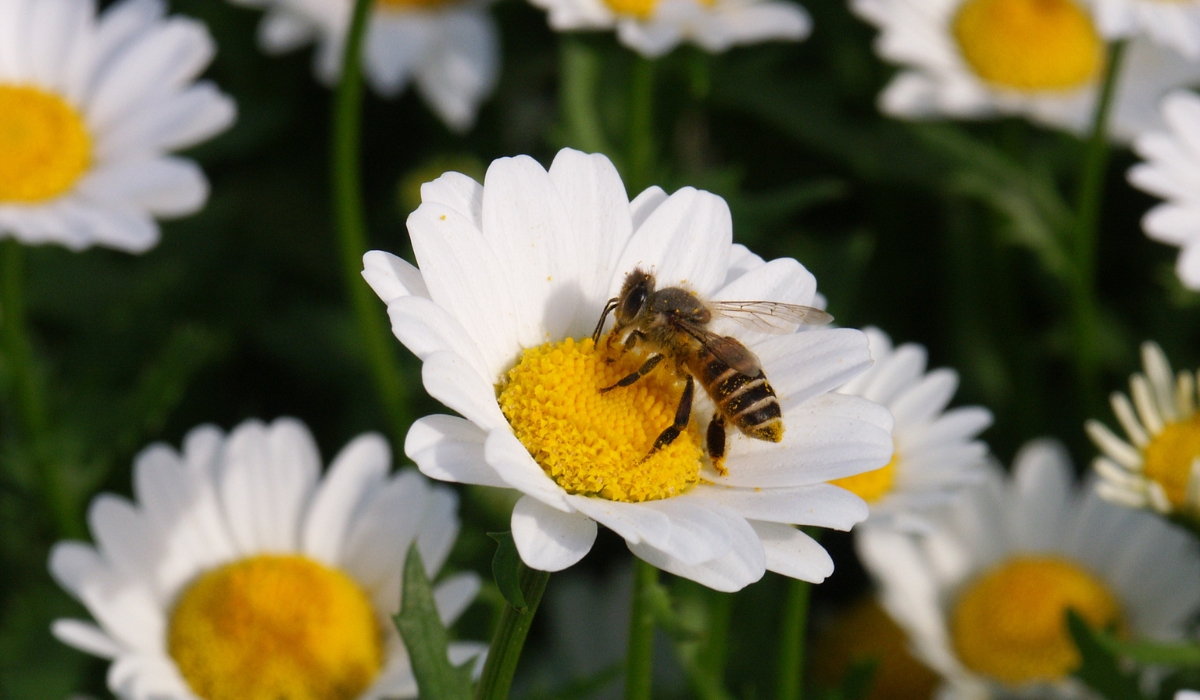
A garden teeming with life is a joy to behold, and the gentle buzzing of bees is a sure sign of a healthy ecosystem. But creating a bee-friendly garden isn’t just about helping our fuzzy, flying friends; it’s also about creating a vibrant, beautiful space for you and your family to enjoy. At DK Landscaping, we believe that you can have a garden that’s both a haven for pollinators and a stunning showcase of natural beauty.
Why Welcome Bees?
Bees are essential pollinators, responsible for much of the food we eat and the flowers we enjoy. By creating a bee-friendly garden, you are:
- Supporting Local Ecosystems: A healthy bee population is vital for the pollination of local plants, helping to maintain biodiversity in our community.
- Boosting Your Garden’s Health: More bees mean better pollination for your flowers and vegetable gardens, leading to more vibrant blooms and a more bountiful harvest.
- Creating a More Engaging Outdoor Space: A garden full of life is a garden full of interest. Watching bees flit from flower to flower is a simple pleasure that connects us with the natural world.
Designing Your Bee-Friendly Oasis
Creating a garden that bees will love is easier than you might think. Here are a few key principles to get you started:
- Plant in Patches: Bees are more attracted to large clusters of the same type of flower. Planting in patches of at least one square yard will make it easier for them to find and forage.
- Choose a Variety of Flowers: Different bees are active at different times of the year, so it’s important to have a variety of flowers that will bloom from early spring to late fall. This will provide a continuous source of food for our pollinating pals.
- Think in Color: Bees are most attracted to blue, purple, yellow, and white flowers. Incorporating these colors into your garden design is a sure way to catch their eye.
- Provide a Water Source: Bees need water to drink, but they can easily drown in open water. A shallow dish filled with pebbles or marbles and a small amount of water will give them a safe place to land and rehydrate.
Bee-utiful Plant Choices
Here are a few of our favorite bee-friendly plants that will also add a splash of color and beauty to your garden:
- Lavender: This fragrant herb is a bee magnet and its beautiful purple spikes will add a touch of elegance to any garden.
- Salvia: With a wide variety of colors and sizes, there’s a salvia for every garden. Their long-lasting blooms will keep the bees coming back for more.
- Sunflowers: These cheerful giants are not only a favorite of bees, but they also provide a tasty treat for birds and other wildlife.
- California Poppies: As our state flower, this vibrant orange beauty is a natural choice for any California garden and a favorite of local bees.
Ready to create a garden that’s buzzing with life? The team at DK Landscaping is here to help. We can design and install a beautiful, bee-friendly garden that you’ll love for years to come. Contact us today to learn more!
Drought-Defying Beauty: Landscaping for a Water-Wise California Summer

California summers are synonymous with sunshine, but also with the critical need for water conservation. At DK Landscaping, we believe that a beautiful garden and water efficiency don’t have to be mutually exclusive. In fact, by embracing smart design principles and the right plant choices, you can create a stunning, drought-defying landscape that flourishes through the dry season, all while being a responsible steward of our precious resources.
Design with Water in Mind: Principles for Efficiency
The foundation of a water-wise landscape starts with thoughtful design.
- Hydrozoning: Group plants with similar water needs together. This allows you to irrigate more efficiently, providing just the right amount of water to each zone without over- or under-watering.
- Reduce Lawn Area: Traditional lawns are notorious water guzzlers. Consider replacing thirsty turf with drought-tolerant groundcovers, permeable paving, or inviting hardscaping. Even a smaller, strategically placed lawn can significantly reduce water consumption.
- Improve Soil Health: Incorporate plenty of organic matter like compost into your soil. Healthy soil retains water more effectively, reducing runoff and making more moisture available to plant roots.
- Capture Rainwater: Explore options like rain barrels to collect rainwater from your roof for later use in your garden. This free water is perfect for supplemental irrigation during dry spells.
Plant Power: Thriving Through the Dry Season
The secret to a vibrant, water-wise garden lies in plant selection. California offers an incredible array of native and Mediterranean-climate plants that are naturally adapted to dry conditions.
- California Natives: Embrace the beauty of plants like Ceanothus (California Lilac), Manzanita, and various Sages (Salvia). They are perfectly suited to our climate, require minimal water once established, and provide habitat for local wildlife.
- Drought-Tolerant Exotics: Many plants from similar climates around the world, such as lavender, rosemary, succulents, and certain ornamental grasses, also thrive with very little water.
- Smart Plant Pairings: Combine plants with complementary textures and forms. Pair the bold shapes of agave with the delicate wisps of fountain grass, or the silvery foliage of ‘White Sage’ with the vibrant purple of ‘Victoria Blue’ Salvia for striking visual appeal.
Hardscaping with Purpose: Beauty and Function
Hardscaping plays a pivotal role in a water-wise landscape, reducing the need for thirsty plants while adding structure and beauty.
- Permeable Paving: Choose materials like decomposed granite, permeable pavers, or gravel for patios and pathways. These allow rainwater to filter into the ground rather than running off, replenishing groundwater.
- Attractive Patios & Decks: Create inviting outdoor living spaces that are naturally low-water. Furnish them with comfortable seating and drought-tolerant container plants for pops of color.
- Dry Stream Beds & Rock Gardens: These features can manage rainwater runoff effectively while adding an artistic, natural aesthetic to your garden, especially when combined with drought-tolerant plantings.
By integrating these design principles, making wise plant choices, and utilizing smart hardscaping, you can cultivate a landscape that not only withstands the dry California summer but thrives with captivating beauty and significantly reduced water consumption. Let DK Landscaping guide you in creating your own drought-defying oasis.
Summer Sanctuary: Maximizing Your Outdoor Living Space for June Enjoyment
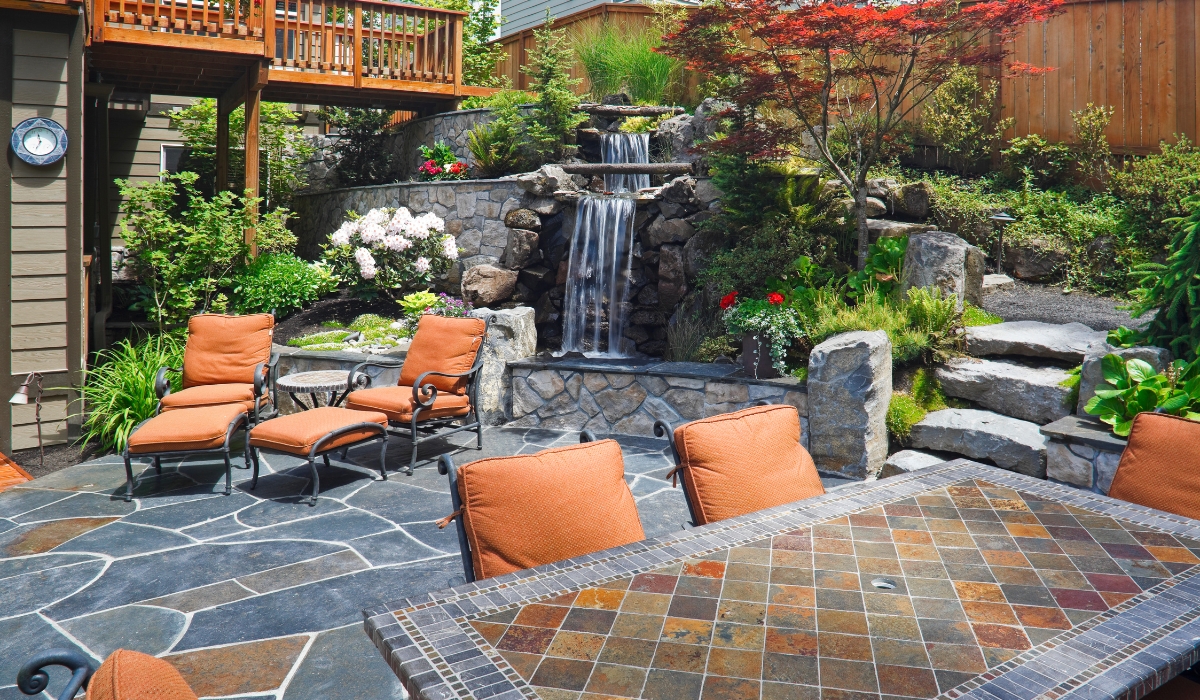
June in California signals the true start of summer, beckoning us outdoors to soak up the long, sun-filled days and balmy evenings. At DK Landscaping, we believe your outdoor living space should be an extension of your home – a true summer sanctuary for relaxation, entertainment, and making cherished memories. Here’s how to maximize your patio, deck, or garden nook for peak June enjoyment.
Embrace the Shade: Your Summer Essential
California sunshine is glorious, but consistent shade is crucial for comfortable summer living. Consider elegant and effective shade solutions for your outdoor areas. A well-placed pergola or arbor can provide structural beauty while supporting climbing vines for natural shade. Retractable awnings offer flexible sun protection, allowing you to choose sun or shade at will. For instant relief, large cantilever umbrellas are versatile and can be moved to where shade is most needed throughout the day. Don’t underestimate the cooling power of strategic tree planting for long-term shade solutions.
Illuminate the Evening: Magical Outdoor Lighting
As the sun sets, good lighting transforms your outdoor space into an enchanting retreat. String lights draped overhead create a festive, whimsical ambiance perfect for gatherings. Pathway lighting ensures safe navigation and highlights key features of your landscape. Uplighting on trees or architectural elements adds dramatic flair, while solar-powered lanterns offer eco-friendly pops of light. For dining areas, consider dimmable overhead fixtures to control the mood. Thoughtful lighting extends your enjoyment well into the night.
Comfort is King: Seating for Relaxation and Entertaining
Uncomfortable seating will quickly empty your summer sanctuary. Invest in comfortable, weather-resistant furniture that invites lounging and lingering. Deep-seated sofas and armchairs with plush, quick-drying cushions are ideal for relaxation. For dining, ensure your table and chairs are sturdy and adequately sized for your usual guest count. Don’t forget accent tables for drinks and snacks, and perhaps a hammock or a comfortable daybed for ultimate repose. Arrange your furniture to encourage conversation and provide clear pathways.
Low-Maintenance Greenery: Ambiance Through Planting
While you want lushness, summer is not the time for high-maintenance plants in your outdoor living areas. Opt for drought-tolerant, low-maintenance plantings in pots and containers to add bursts of color and texture without constant fuss. Succulents, ornamental grasses, lavender, and bougainvillea thrive in the California sun and require minimal water. Herbs like rosemary and basil not only look great but offer delightful aromas. Use strategic planting to define spaces, add privacy, and create a soft, inviting backdrop to your summer sanctuary.
By focusing on effective shade, enchanting lighting, luxurious comfort, and smart planting, your outdoor living space will become the ultimate summer destination for friends, family, and peaceful solitude. Let DK Landscaping help you design and implement the perfect summer sanctuary for your California home.





